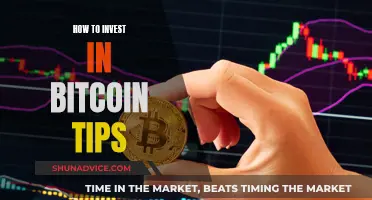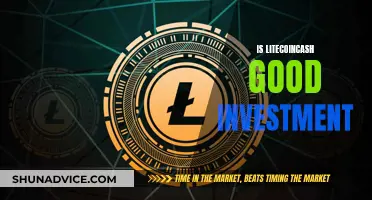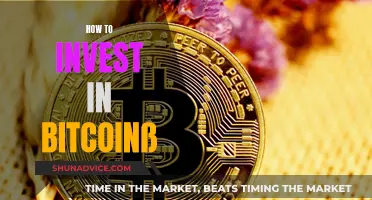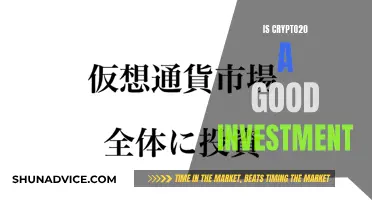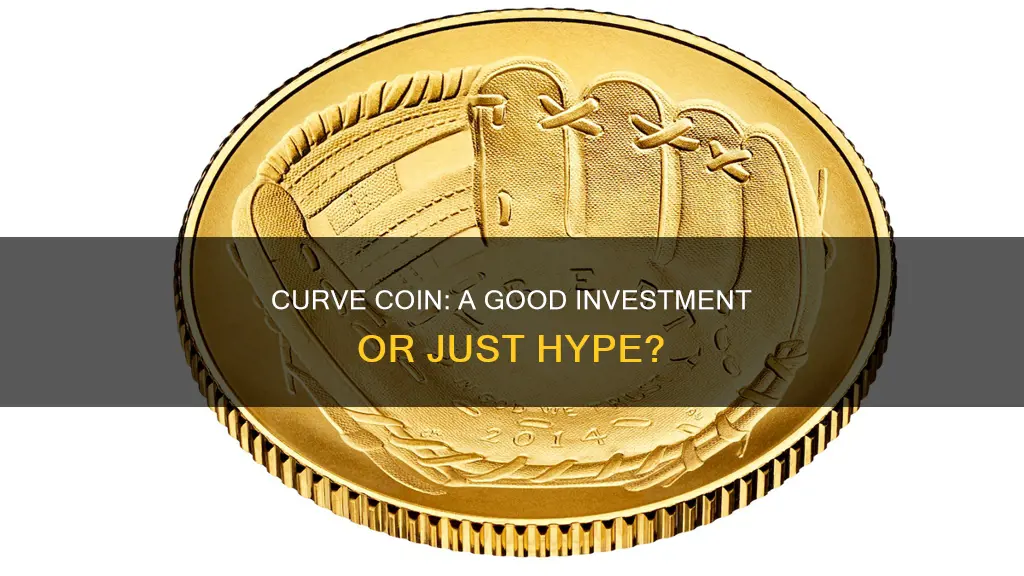
Curve Finance is a decentralised exchange (DEX) that only trades stablecoins or wrapped versions of cryptocurrencies, like wBTC. It is built on Ethereum and is designed to provide efficient trading between cryptocurrencies of the same value and provide high annual interest returns on cryptocurrency funds deposited by liquidity providers. Its native token is the Curve DAO Token (CRV), which is an ERC-20 token and the platform's governance token. CRV has experienced volatile price movements since its launch in August 2020, and Curve Finance itself has been the target of several hacks, including a significant one in July 2023. Despite this, Curve Finance is the largest DEX on Ethereum by total value locked and is considered the best place to provide liquidity and trade stablecoins. So, is Curve Coin a good investment?
| Characteristics | Values |
|---|---|
| Curve DAO Token (CRV) Rank | Top 100 cryptocurrencies by market capitalisation |
| Curve Decentralised Exchange (DEX) | Only trades stablecoins or wrapped versions of cryptocurrencies, like wBTC |
| Curve Founder and CEO | Michael Egorov |
| Curve DAO Token (CRV) Launch Date | 14 August 2020 |
| Curve DAO Token (CRV) All-Time High | $60.50 on 14 August 2020 |
| Curve DAO Token (CRV) All-Time Low | BTC0.053536 on 5 August 2024 |
| Curve DAO Token (CRV) Market Cap | BTC5,610.4198 |
| Curve DAO Token (CRV) Fully Diluted Valuation (FDV) | BTC10,402.3568 |
| Curve DAO Token (CRV) Trading Volume | $184,513,840.53 in the last 24 hours |
| Curve DAO Token (CRV) Price Decline | -12.20% in the last 7 days |
| Curve DAO Token (CRV) Purchase | CRV tokens can be traded on centralised crypto exchanges such as Gate.io, DigiFinex and BingX |
What You'll Learn

Curve DAO Token's (CRV) price history
Curve DAO Token (CRV) was launched on 14 August 2020 and immediately rocketed to an all-time high of $60.50. It then plummeted and closed the day at $11.61. This bearish trend continued, and by the end of September 2020, it had crashed under $1.
In early 2021, CRV began to climb again, alongside a bullish crypto market. On 11 February 2021, a vote took place to amend certain pools, and the following day, CRV peaked at $3.60.
In April 2021, CRV surged even higher, reaching $4.65, following a vote to add a liquidity gauge to the new BUSD metapool.
In early 2022, CRV passed the $5 mark, and on 3 January 2022, a new pool was launched with the T Network token. The following day, CRV hit a peak of $6.74 but then crashed and has been stuck in a bearish trend since. In June 2022, it stooped below $1 once more.
CRV managed to recover from this low, even in the face of a hack in August 2022, where attackers stole $570,000. Curve claimed that the source of the hack had been found and patched. On 8 August 2022, CRV reached a peak of $1.49 but then resumed its bearish trend.
On 22 November 2022, CRV stooped to a low of $0.40, but the cryptocurrency started to rebound. At the time of writing, CRV was trading at $0.62, up 50% in the past 24 hours but down 30% in the past month.
Amazon Coin: Worth Investing?
You may want to see also

CRV's short squeeze
The Curve DAO Token (CRV) has had a bumpy price history since its launch on 14 August 2020. It reached an all-time high of $60.50 on its launch date, only to plummet and close the day at $11.61. It has been on a bearish trend ever since, unable to pass its launch price.
In recent times, CRV has been the target of a "coordinated attack" by shorters. There have been reports of a user, Avi_eisen, shorting 17 million CRV on the Aave DeFi protocol. Additionally, the Lookonchain Twitter account has reported that a borrower from Aave is dumping 20 million CRV.
Despite these attacks, CRV has shown some resilience. Curve's founder, Michael Egorov, reportedly has $48 million of CRV supplied on Aave with a liquidation price of $0.259. On 22 November 2022, CRV stooped to a low of $0.40, which is still significantly above Egorov's liquidation price. The cryptocurrency has since rebounded, trading at $0.62, up 50% in the past 24 hours.
While the short squeeze has caused volatility, some analysts remain optimistic about CRV's future. DigitalCoinPrice predicts CRV will climb to $2.73 in 2025 and reach an average price of $8.93 by 2030. TechNewsLeader expects CRV to trade at $1.76 in 2023 and potentially surge past $20 by 2030.
However, it is important to remember that cryptocurrency markets are extremely volatile, and it is challenging to accurately predict coin prices. Investors should always conduct thorough research and carefully consider their risk tolerance and investment strategies before making any investment decisions.
Why Bitcoin is a Bad Investment Choice
You may want to see also

Curve's decentralised organisation
Curve Finance is a decentralised exchange (DEX) built on Ethereum. It was created by Russian physicist Michael Egorov, who is also the founder and CEO. Egorov has a background in software engineering and blockchain/cryptocurrency projects.
Curve Finance is unique in that it only trades stablecoins or wrapped versions of cryptocurrencies, like wBTC. It uses an automated market maker (AMM) to provide low fees, slippage and impermanent loss.
The Curve DAO Token (CRV) is the governance token of the Curve Finance platform. It was launched in August 2020 and has experienced a bumpy price history since. Despite this, it has proven successful, climbing into the top 100 cryptocurrencies by market capitalisation.
In August 2020, Curve began creating its own decentralised autonomous organisation (DAO) to manage the protocol. The Curve DAO Token is the key to membership of this organisation. Investors can purchase CRV on exchanges, or it can be earned through yield farming. CRV holders can lock in their tokens and receive voting rights in return. The more CRV that is owned and locked, the larger the percentage of voting power.
Curve Finance has some unique features that set it apart from other DEXes. It has a complex time-based staking system to exchange CRV into veCRV, which is used for governance purposes and has the right to claim the cash flows generated by the protocol. It also has 'factory pools', which are pools with multiple stablecoins pegged to the same asset.
Curve is regarded as the king of DEXes on Ethereum, with billions of dollars of total value locked (TVL). It is the backbone of many DeFi protocols and is considered the best place to provide liquidity and trade stablecoins.
The Bitcoin Investment Dilemma: Worth the Risk?
You may want to see also

Curve Finance's lending platform
Curve Finance is a decentralised exchange (DEX) liquidity pool built on Ethereum. It was created by Russian physicist Michael Egorov, who has a background in software engineering and experience in blockchain and cryptocurrency. Egorov has stressed the importance of constantly reviewing Curve's code to ensure there are no issues, and the platform offers bug bounties worth up to $50,000 to anyone who can find errors.
Curve Finance is specifically designed for the exchange of stablecoins and wrapped assets, such as wBTC. It aims to provide low fees, slippage and impermanent loss. It does this by accommodating liquidity pools made up of similarly-behaving assets, which allows Curve to use more efficient algorithms and feature the lowest levels of fees, slippage and impermanent loss of any decentralised exchange on Ethereum.
Liquidity providers on Curve can earn rewards in the form of CRV tokens and interest. They can also earn rewards from outside of Curve with interoperable tokens. For example, when DAI is lent out on the Compound platform, it is exchanged for a liquidity token called cDAI, which automatically accumulates interest for the holder. Curve users can then use cDAI in its liquidity pools, achieving a second layer of utility and potential earning from the same amount of investment.
Curve Finance also integrates with Yearn Finance and Synthetix to maximise incentives for liquidity providers.
In terms of lending, Curve Finance allows users to create loans with crvUSD. This involves specifying a certain amount of a collateral asset and determining the quantity of crvUSD to borrow. The interface then displays the maximum amount of crvUSD that can be borrowed, along with the health and borrow rate of the loan. Users can also manually select the number of bands for the loan, with a higher number of bands resulting in fewer losses when the loan is in soft-liquidation mode.
UK Bitcoin Investment: Where to Start?
You may want to see also

Curve's fees
Curve Finance is a decentralised exchange (DEX) that stands out from the rest as it only trades stablecoins or wrapped versions of cryptocurrencies, like wBTC. It is an exchange liquidity pool on Ethereum (like Uniswap) designed for extremely efficient stablecoin trading and low-risk, supplemental fee income for liquidity providers, without an opportunity cost.
Curve Finance was created by Russian physicist Michael Egorov, a seasoned cryptocurrency veteran. He has stressed that it is necessary to constantly review the code to ensure there are no issues. As such, Curve Finance offers bug bounties worth up to $50,000 USD to anyone who can find any errors in their DEX, CRV, or DAO code.
Curve Finance can be conceived of as a series of asset pools. All these pools contain cryptocurrencies that are worth the same value. At the moment, 3 of the 7 pools on Curve Finance involve stablecoins, and the remaining 4 involve various versions of wrapped Bitcoin such as wBTC, renBTC, and sBTC. These pools can give incredibly high interest on deposited funds, currently returning over 300% per year to liquidity providers (for the BUSD pool).
The platform makes money by charging a modest fee which is paid to liquidity providers. Most swaps on Curve cost 0.04% in fees. 50% of the fees go to veCRV holders and 50% of the fees go to Liquidity Providers (LPs). Pools that are launched through the pool factory can support up to 1% in fees.
Curve DAO Token (CRV) withdrawal fees vary depending on the exchange platform. For example, the withdrawal fee on MEXC is $0.0000000 - 0CRV, while the withdrawal fee on DigiFinex is $0.0017209 - 0.004CRV.
The Crypto Investment Conundrum: Which Coin to Choose?
You may want to see also
Frequently asked questions
Curve is a decentralised exchange that trades stablecoins or wrapped versions of cryptocurrencies, like wBTC. Curve DAO Token (CRV) is the governance token of the Curve Finance platform.
CRV launched on 14 August 2020 and rocketed to its all-time high of $60.50 that day, according to CoinMarketCap. It then immediately plummeted and closed the day at $11.61. This bearish trend stuck with CRV and it has been unable to pass its launch price.
The market capitalization of Curve DAO (CRV) is BTC5,610.4198 and is ranked #180 on CoinGecko today. Market cap is measured by multiplying token price with the circulating supply of CRV tokens (1.2 Billion tokens are tradable on the market today).
CRV is giving investors voting rights on various proposals that would impact the DeFi protocol. However, Curve DAO Token has been stuck in a bearish trend since January 2022. Curve could be a great investment, especially if you think that a low market capitalization to TVL ratio is important.


